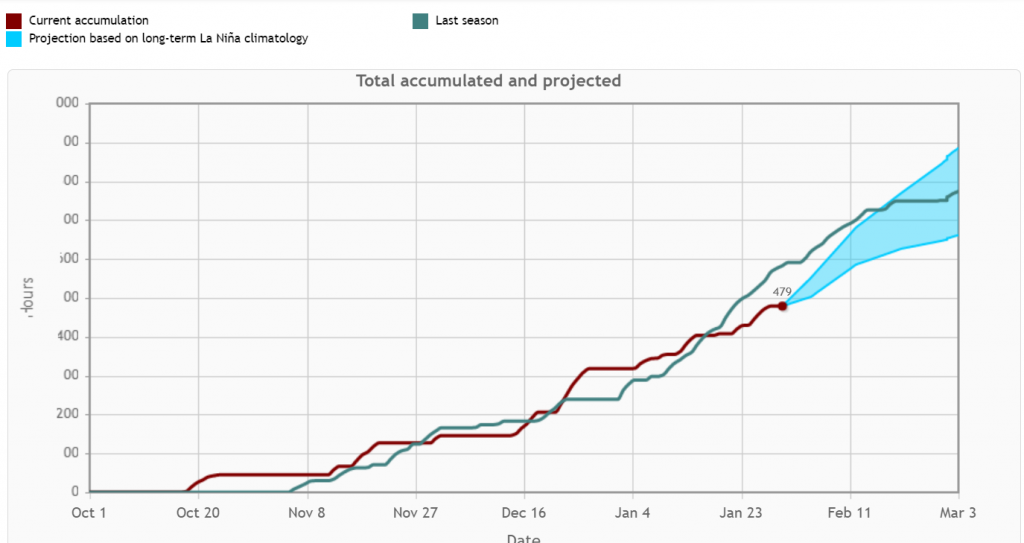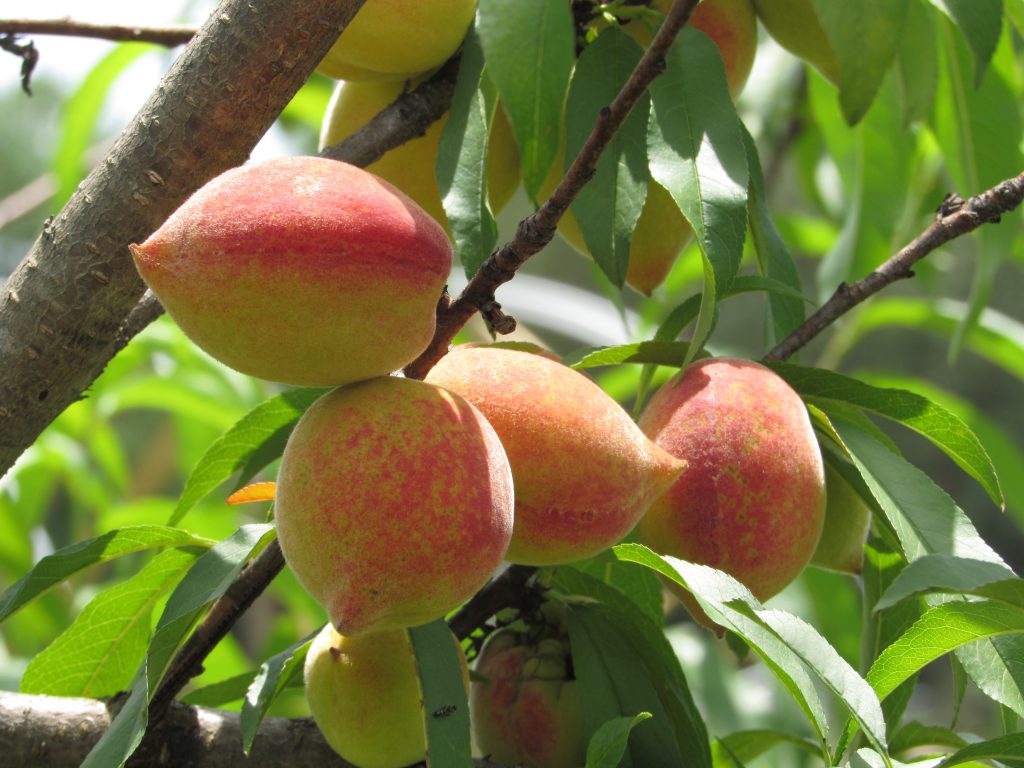Any North Florida resident who has tried their hand at growing apples, peaches, or plums may occasionally find themselves frustrated by a year (or two…or three) with a poor or nonexistent harvest. What has gone wrong? Are the trees getting a disease? Were they not fertilized properly?
It may be that the tree owner has done everything correctly, but the weather is actually to blame. The answer to “what has gone wrong?” may lie with a concept called “chill hours”. Plants that are adapted to living in colder climates need some way to figure out when the winter is over. If a plant starts blooming too early, it’s likely that a frost will come along and knock out this year’s flowers. No flowers, no fruit. For a plant, this means no little baby plants this year to keep the species going. To avoid this, some plants have figured out a way to detect and keep track of how cold it’s been in a particular year. When enough hours of cold weather have accumulated, that’s usually a safe signal that spring must be near. This means it’s time to blossom when the weather next warms up.
Usually. Different varieties of plants are adapted to blossom at different times of year, depending on the average amount of cold weather the area they live in gets each year. A plant from a colder climate might not start growing flowers until it has detected 1,000 hours of cold…or more! Given that the temperature range that counts as a chill hour is around 32-45 degrees Fahrenheit, you might correctly guess that such varieties will NOT do well in Florida. In north Florida, we receive somewhere from 500-700 chill hours each year. This winter (as of February, 2023), we have received 479 chill hours in Walton County.

That’s not a lot, and we may not get much more weather that plants recognize as cold enough to count. Apple growers with varieties that need even as few as 500 chill hours may not be making many pies this year. So what can be done?
First, temper your expectations. Understand that even though we may get the occasional hard freeze, it may not count any more toward the chill hour requirement than temperatures just above freezing. Then, when it warms up the following week, those 70 degree temperatures may actually set BACK the chill hour clock for some plants.
Second, choose varieties that require few chill hours in the first place. A ‘Honeycrisp’ apple, needing 800-1000 chill hours each year, is probably never going to produce fruit in the panhandle of Florida. Other apple varieties might, though! Try varieties such as ‘Anna’ (which needs only 300 chill hours), ‘Dorsett Golden’ (250 hours), or ‘Tropic Sweet’ (300 hours). For peaches, try varieties like ‘GulfAtlas’, ‘Gulfcrimson’, or ‘Gulfsnow’ (400 hours each).
Third, consider learning to love other types of fresh fruit. Persimmons, figs, kumquats, and loquats may not show up very often in treasured family recipes, but they can offer a tasty alternative to plants that simply might not be well adapted to our climate.

For more information, try these links:
To calculate how many chill hours your specific area has received, check out the tool at agroclimate.org.
For information on apples, peaches, plums, blueberries, or other fruits, try our EDIS publications on each.
You can also, of course, contact your local Extension office for help as well!
Evan Anderson
Walton County Horticulture Agent
- The Eastern Lubber Grasshopper - June 5, 2025
- Grass is Growing; Time for Mowing - April 30, 2025
- Variegation, Viruses, and You - June 27, 2024
